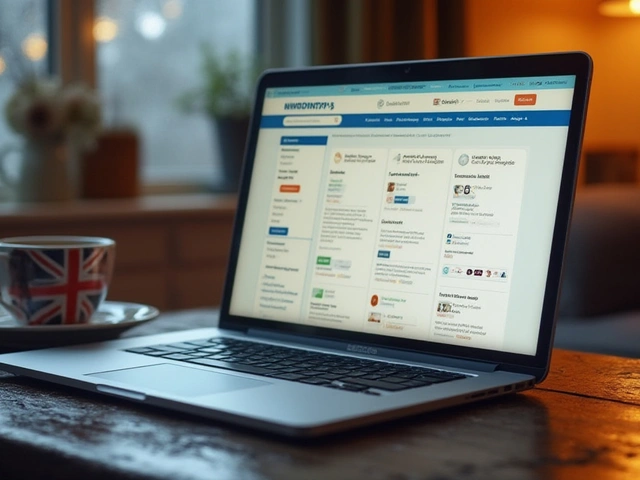Exercise & Constipation Relief Calculator
Your Personalized Exercise Plan
Get tailored recommendations based on your current activity level to improve bowel regularity.
Your Personalized Recommendations
Recommended weekly exercise:
Current weekly exercise:
Additional needed:
Personalized Tips
Hydration Guide
Quick Takeaways
- Regular exercise improves colon motility and reduces constipation severity.
- Aerobic activities boost gut microbiota diversity, while resistance training strengthens pelvic floor muscles.
- Combine at least 150 minutes of moderate activity weekly with adequate hydration and fiber for best results.
- Start slowly, track bowel patterns, and adjust intensity based on personal comfort.
- Consult a healthcare professional if symptoms persist despite lifestyle changes.
Feeling bloated, sluggish, or constantly waiting for a bathroom? If you’ve been diagnosed with Chronic Idiopathic Constipation is a long‑term condition where stool moves too slowly through the colon without an identifiable medical cause. While diet and medication get most of the attention, movement matters just as much. Let’s break down how different forms of Exercise act on the gut, why the science backs it, and practical steps you can add to your routine today.
What Happens Inside the Gut During Constipation?
In Chronic Idiopathic Constipation, the colon’s smooth muscle contracts less efficiently, slowing stool transit. Two key players are Colon Motility-the rhythmic squeezing that pushes waste forward-and the Pelvic Floor Muscles, which coordinate the final push. When these mechanisms lag, water is reabsorbed, stool hardens, and the urge to go weakens.
Research shows that less than 30 minutes of daily activity can raise the frequency of high‑amplitude propagating contractions (the powerful waves that move stool) by up to 20 % (J Gastroenterol, 2023). In plain terms, moving more gives your colon a gentle nudge to work harder.
Aerobic Exercise: The Gut‑Friendly Cardio Boost
Heart‑pumping activities-walking, jogging, cycling, swimming-are called Aerobic Exercise. They increase overall blood flow, which supplies the colon with oxygen and nutrients needed for muscle contractions.
A 12‑week study of 150 adults with constipation found that moderate‑intensity aerobic sessions (30 min, 5 days/week) cut average bowel movement time from 4 days to 2 days. Participants also reported softer stools and less abdominal discomfort.
Why does cardio help? First, it raises the release of serotonin in the gut, a neurotransmitter that stimulates peristalsis. Second, aerobic work reshapes the Gut Microbiota, encouraging bacteria that produce short‑chain fatty acids-compounds that fuel colon muscle cells.

Resistance Training: Strengthening the Pelvic Floor
When you lift weights or do body‑weight moves, you’re engaging Resistance Training. While the primary goal is muscle hypertrophy, certain exercises also tighten the Pelvic Floor Muscles and improve intra‑abdominal pressure, both of which aid evacuation.
A pilot trial in 2022 compared a 10‑minute daily resistance routine (squats, bridges, dead‑bugs) against a control group. The exercise group saw a 35 % increase in weekly bowel movements after eight weeks, and their stool consistency moved from hard (Bristol type 1) to optimal (type 4).
Key moves for constipation relief include deep squats, glute bridges, and core‑stabilizing planks. Aim for 2‑3 sets of 12‑15 reps, focusing on smooth, controlled motions.
Hydration, Fiber, and the Role of Water in Motion
Even the best workout won’t fix constipation if you’re dehydrated. Water softens stool by keeping it hydrated as it travels through the colon. Aim for at least 2 L (about eight cups) of fluid daily, plus extra during intense sessions.
Fiber works hand‑in‑hand with water. Soluble fiber (oats, apples, psyllium) forms a gel that retains water, while insoluble fiber (whole grains, nuts) adds bulk. The combination speeds up transit time. If you increase fiber, boost water intake simultaneously to avoid the opposite effect-harder stools.
Putting It All Together: A Sample Weekly Plan
| Day | Activity | Duration / Sets | Focus |
|---|---|---|---|
| Monday | Brisk Walking | 30 min | Aerobic boost |
| Tuesday | Resistance Circuit (Squats, Bridges, Planks) | 3 sets × 12‑15 reps | Pelvic floor strength |
| Wednesday | Swimming | 30 min | Low‑impact cardio |
| Thursday | Yoga (Twist poses) | 20 min | Core activation & relaxation |
| Friday | Jogging or Cycling | 30 min | Cardiovascular health |
| Saturday | Resistance Circuit (repeat Tuesday) | 3 sets × 12‑15 reps | Strength maintenance |
| Sunday | Rest or gentle stroll | 15‑20 min | Recovery |
Pair this schedule with 25‑30 g of total fiber and regular fluid intake. Track bowel movements in a simple log to see trends; many people notice improvement within two weeks.
Common Pitfalls and How to Avoid Them
- Doing too much, too fast: Jumping from sedentary to high‑intensity workouts can cause abdominal cramping. Start with moderate walking and gradually increase intensity.
- Skipping warm‑up or cool‑down: Sudden changes in activity level can disrupt the gut’s rhythm. Include 5‑minute gentle stretches before and after each session.
- Neglecting hydration: Sweating without replacing fluids leads to harder stools. Keep a water bottle handy during exercise.
- Ignoring pain signals: Sharp lower‑abdominal pain may indicate an underlying issue beyond constipation. Seek medical advice if pain persists.
When to Seek Professional Help
If you’ve tried the above lifestyle tweaks for eight weeks and still experience fewer than three bowel movements per week, blood in stool, unintended weight loss, or severe abdominal pain, schedule an appointment. A gastroenterologist may order tests to rule out obstructive causes, assess thyroid function, or discuss prescription options like osmotic laxatives.
Remember, exercise is a powerful adjunct, not a replacement for medical treatment when needed.
Bottom Line: Move to Feel Better
Science consistently shows that regular Exercise - especially a mix of aerobic cardio and targeted resistance - nudges the colon into a healthier rhythm, enriches gut bacteria, and strengthens the muscles that finish the job. Pair movement with fiber, water, and a stool‑tracking habit, and you’ll likely see fewer days of waiting and more comfortable, regular trips to the bathroom.
Can walking alone improve chronic idiopathic constipation?
Yes. Moderate‑pace walking for 30 minutes most days raises colon motility and boosts serotonin release, which can reduce constipation severity. Consistency matters more than speed.
How many minutes of exercise are needed each week?
Guidelines suggest at least 150 minutes of moderate aerobic activity weekly, plus two sessions of resistance training targeting the lower body and core.
Is yoga useful for constipation?
Yoga poses that involve twists and gentle compressions (e.g., seated twist, wind‑relieving pose) can stimulate the abdominal organs and aid bowel movements, especially when practiced after a short walk.
Should I take laxatives if I start exercising?
It’s best to hold off on laxatives until you gauge how your body responds to diet and activity changes. Over‑reliance can mask underlying issues and disrupt gut flora.
What’s the role of hydration in preventing constipation?
Water keeps stool soft and supports the fiber’s bulking effect. Aim for at least 2 liters daily, and add extra ounces during sweaty workouts.





Sarah Riley
October 22, 2025 AT 21:08The purported serotonin–peristalsis axis is presented without robust meta‑analysis; consequently the mechanistic claim remains speculative.
Tammy Sinz
October 31, 2025 AT 09:13Your synthesis of aerobic‑induced microbiota modulation is precise, and the recommendation of progressive intensity mirrors established adaptation pathways, reinforcing the practical applicability of the protocol.
Christa Wilson
November 8, 2025 AT 22:19Love the positivity! 😊 Adding a quick 5‑minute stretch after each walk can amplify the gut‑stimulating effect and keep motivation high! 🌟
John Connolly
November 17, 2025 AT 11:24From a clinical standpoint, pairing 150 minutes of moderate cardio with two strength sessions per week hits both the motility and pelvic‑floor targets; just remember to hydrate before, during, and after each workout.
Sajeev Menon
November 26, 2025 AT 00:30Hey guys, i think its importent to start witheverything slow – like 10 mins walk first, then upp the tempo. also, dont forgtt water, alot of it, lol.
Emma Parker
December 4, 2025 AT 13:35I swear, after my morning jog I never have to wait all day for the bathroom again!
Joe Waldron
December 13, 2025 AT 02:40Indeed, the cardio component increases splanchnic blood flow, which supplies oxygen to the colonic smooth muscle, thereby enhancing peristaltic vigor, while simultaneously upregulating enterochromaffin cell activity, and consequently boosting serotonin release, a key neurotransmitter in gut motility.
Wade Grindle
December 21, 2025 AT 15:46Interesting read; the balance between aerobic and resistance work seems spot on for maintaining regularity without overloading the system.